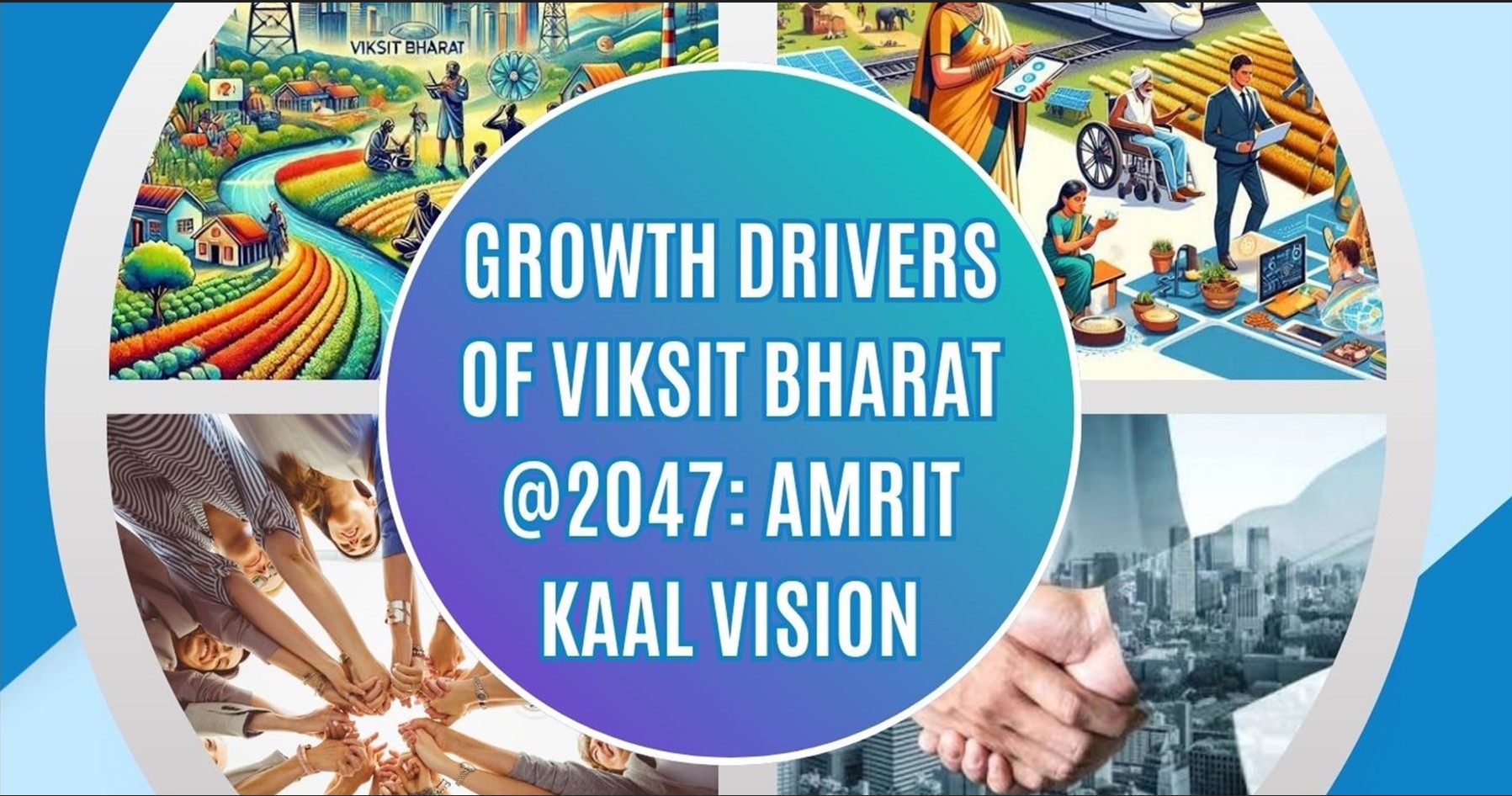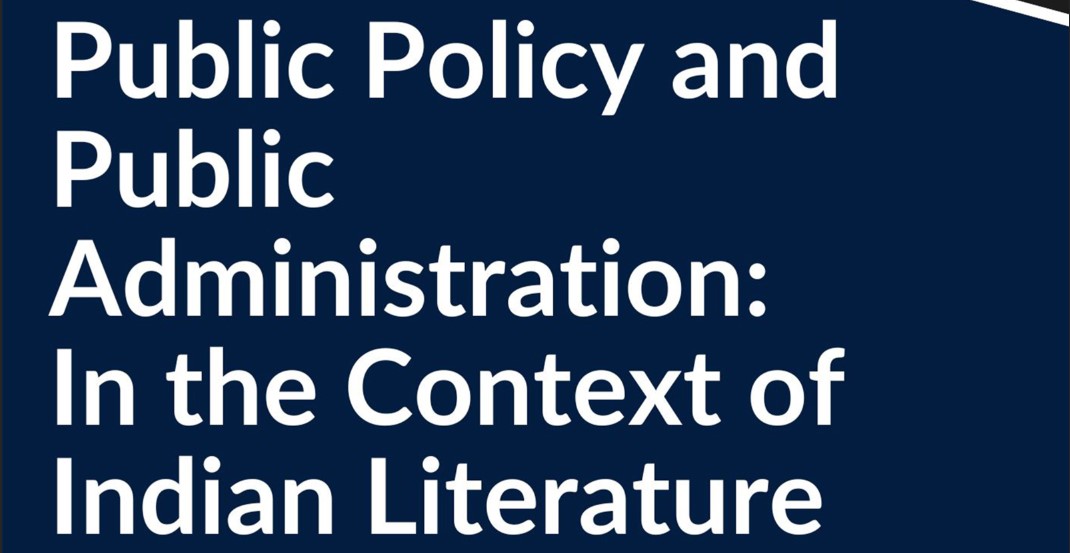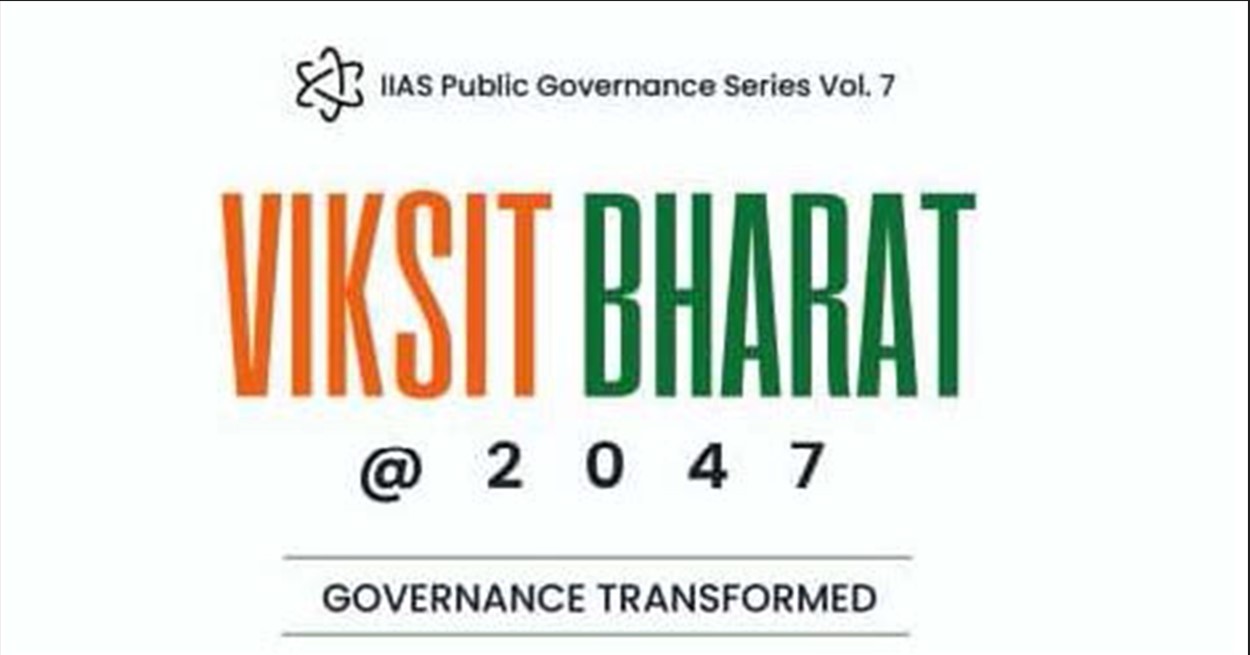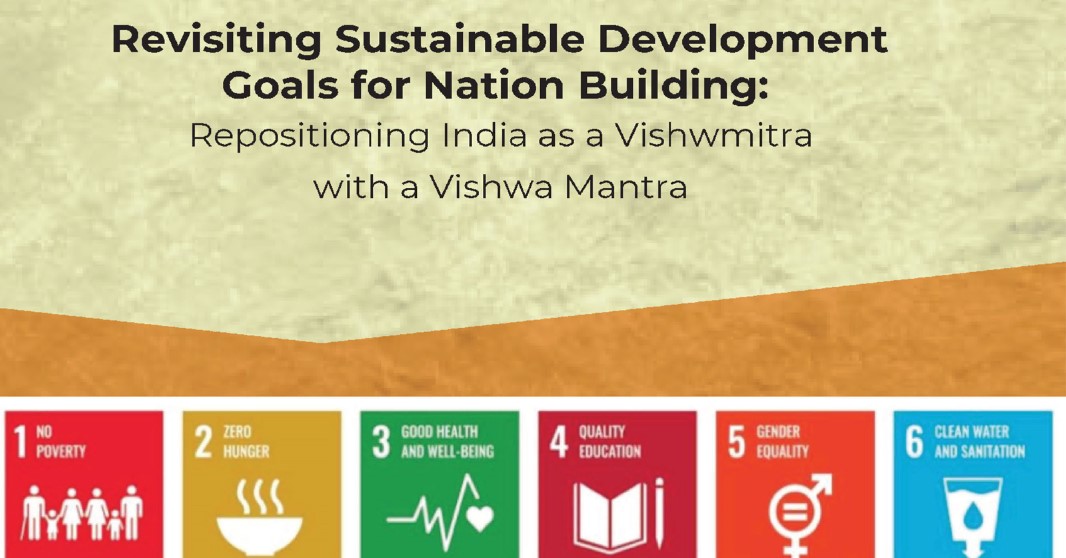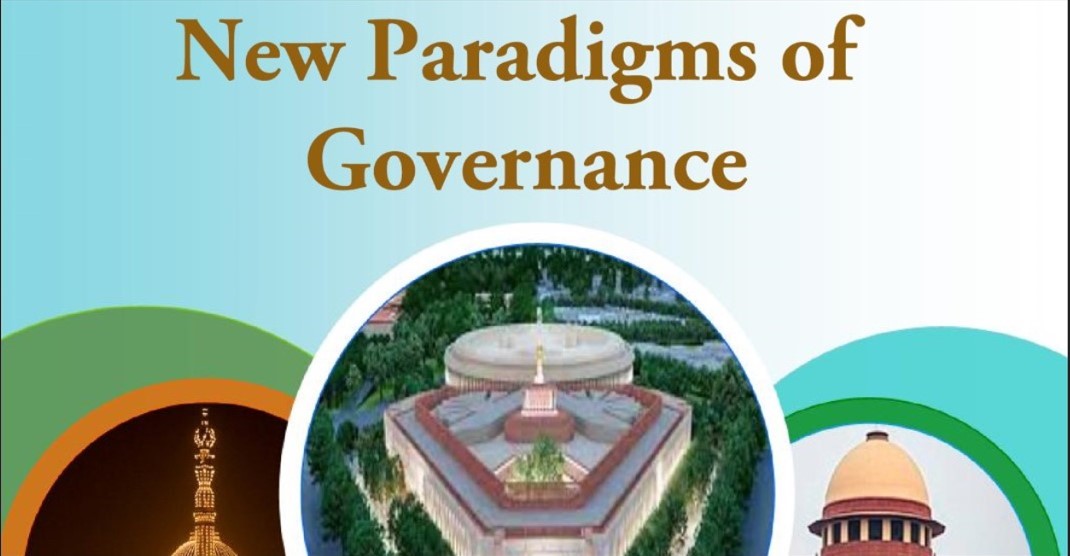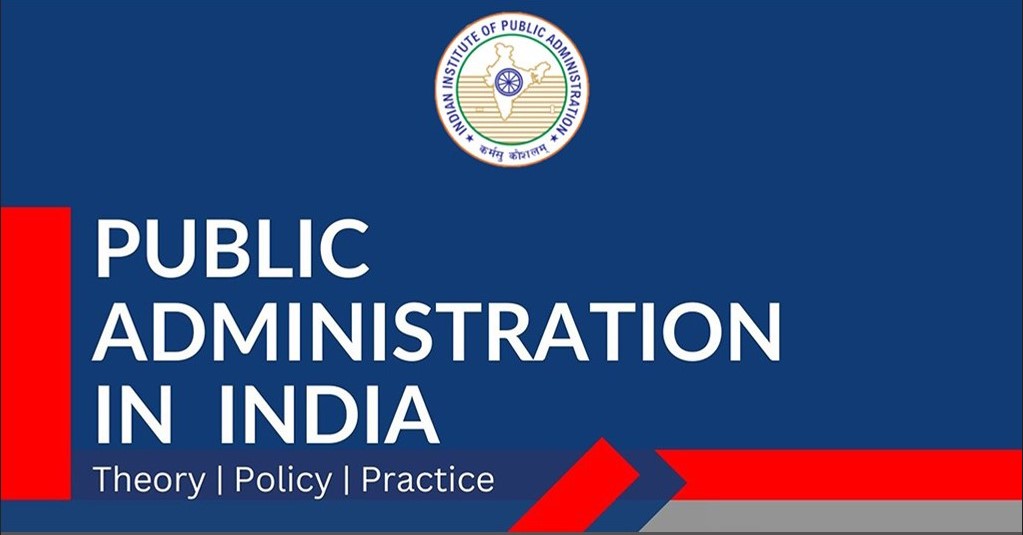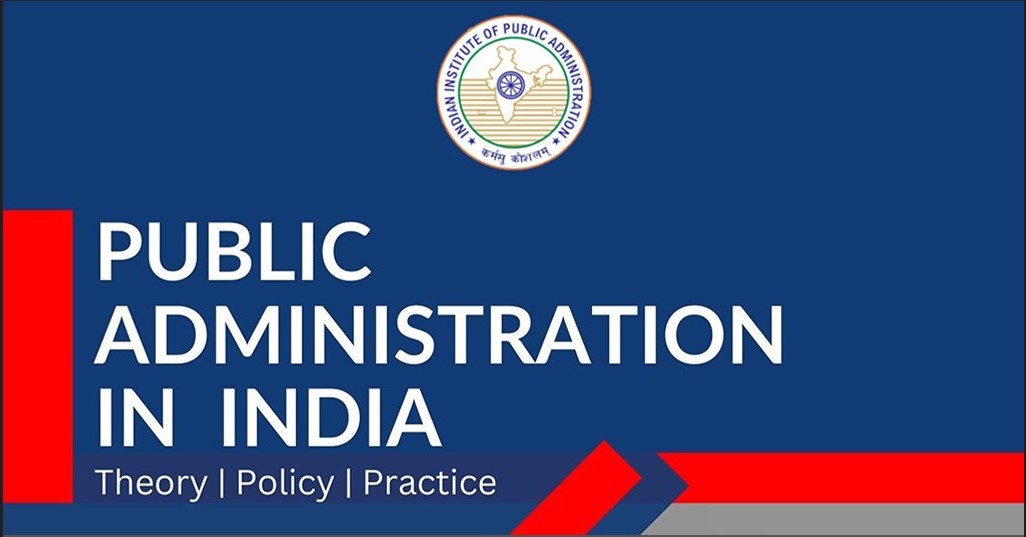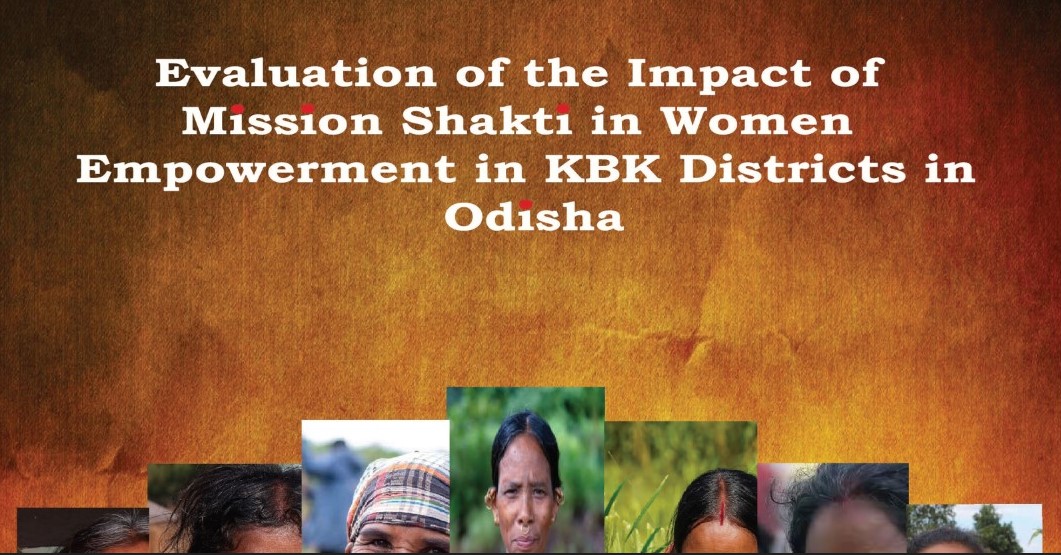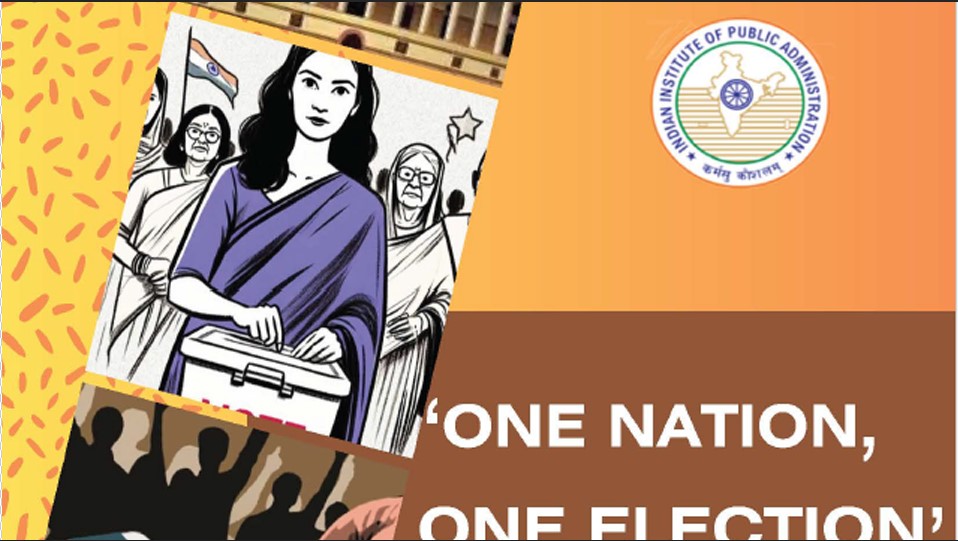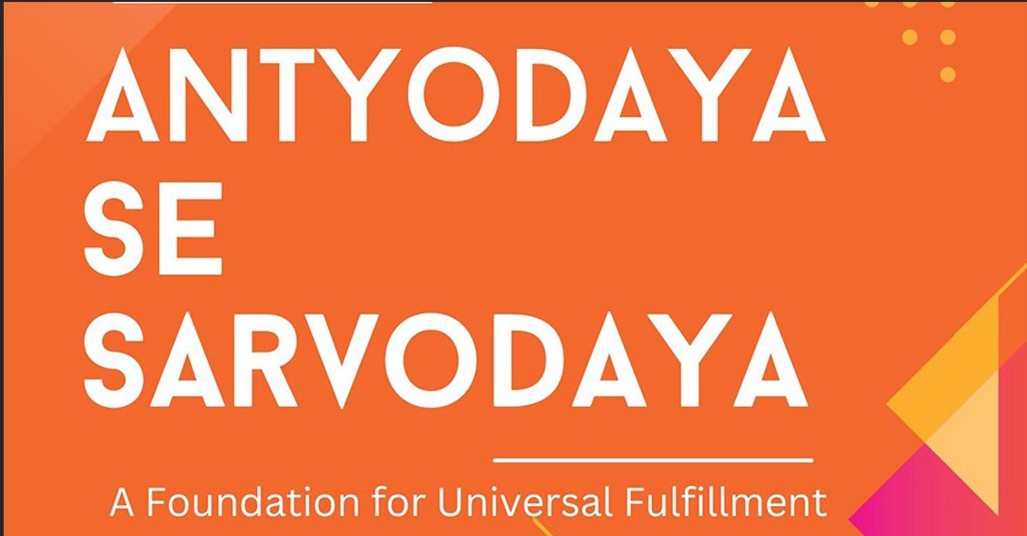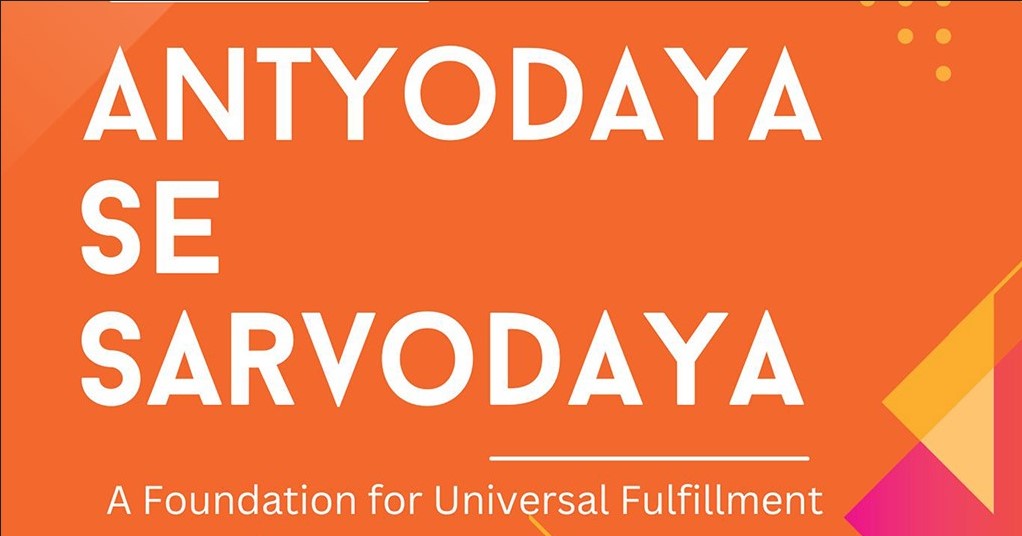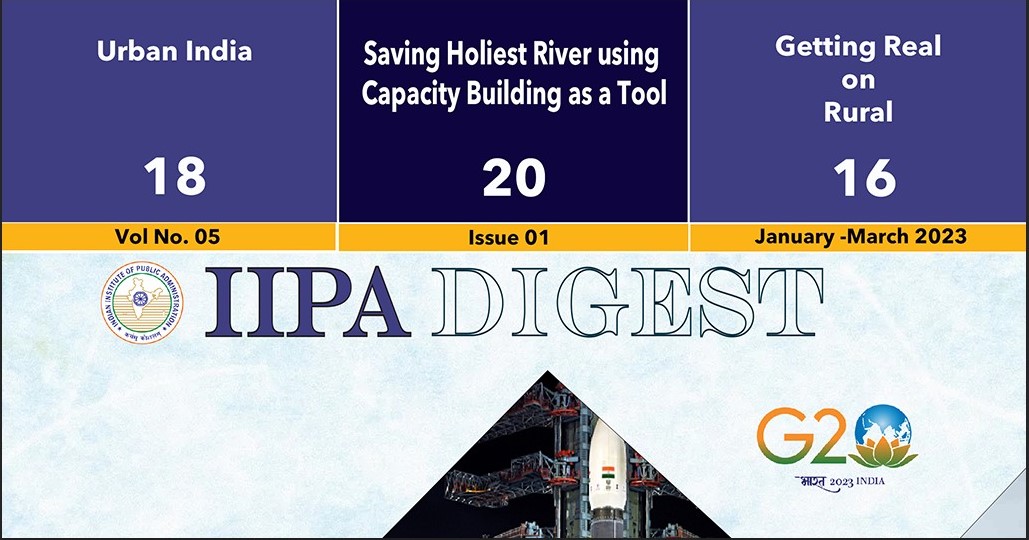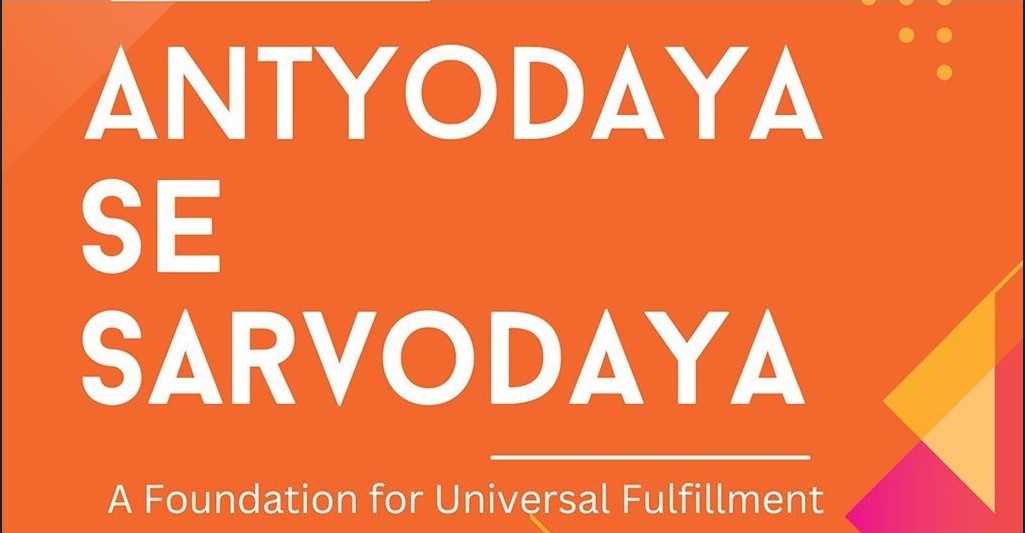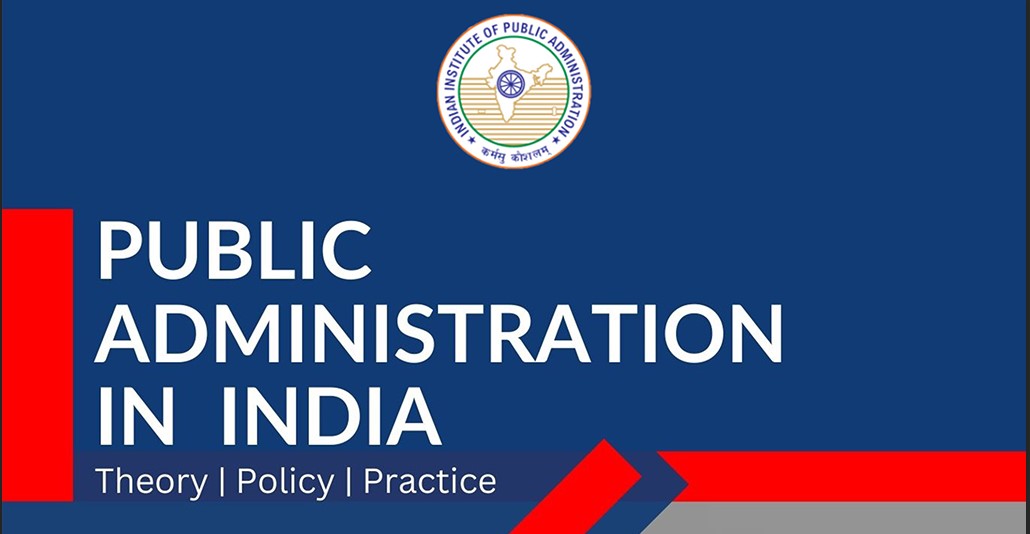Evidence-Based Decision-Making for Viksit Bharat: Conceptualizing a District-Level Data-Exchange DPI
Abstract
Spurred by the national vision of Viksit Bharat @2047, the present study attempts to achieve the goal of presenting a pathway for evidence-based decision-making by conceptualising a framework for building a unified Data Exchange Digital Public Infrastructure (DPI), christened by the authors as ‘जिला डेटा मंच’ ( Jila Data Manch, JDM). The evolution of this framework is more explicitly evident in the District Good Governance Index (DGGI) project, developed for the state of Uttar Pradesh (UP) in India (https://www.iipa.org.in/cms/public/page/DGGI)
Inspired by her institutions Director-General, the first author had jointly curated UP-DGGI through her parent organisation, viz. Indian Institute of Public Administration (IIPA), New Delhi. UP-DGGI proved to be the driving force for evidence-based decision-making for all 75 districts of the UP state, and it also sowed the idea for conceptualising ‘जिला डेटा मंच’, alias JDM, espoused in the present study. The motivating presumption for the JDM has been that to meet the aspirations of its people, governance efforts at the national and state levels need to devolve to the district/local levels. Therefore, JDM focuses on district-level data related to all governance sectors, such as education, health, agriculture, industry, and commerce, for all 788 districts of India and applies basic principles of predictive Artificial Intelligence (AI) in public administration. This kind of central data repository, therefore, is expected to promote transparency and accountability, service delivery, and also contribute to the socio-economic development of particularly aspirational districts.
Keywords: Viksit Bharat, digital public infrastructure, digital public goods, district data, exchange, good governance, India, evidence-based decision making, digital Platform, 2047, public service delivery, district good governance index, Indian Institute of Public Administration, Jila Data Manch, SDGs.
1. Introduction
Public Infrastructure, such as roads, transportation, and irrigation, is meant to ‘connect’ the populace with non-rivalrous consumption. The same analogy applies to Digital Public Infrastructure (DPI). Although it comprises platforms, apps, codes, protocols, multiple systems, and processes, DPI integrates them into a cohesive ‘digital stack’ to deliver essential services population-wide. Such a digital system can be implemented as a proprietary solution or through open-source solutions where multiple stakeholders collaborate to design and implement a digital solution for societal good. Its protocols boast essential features such as ‘interoperability,’ ‘security-by-design,’ ‘privacy-by-design,’ and much more. It could ideally have a multi-lingual, multi-modal user interface (UI) to provide seamless user experiences (UX) to diverse types of users. DPIs are, therefore, expected and should be designed to democratise the data economy.
Understanding DPI: A DPI is generally a set of open digital capabilities. Its purpose is to create a data impact at scale such that an ecosystem emerges to protect stakeholders (https://digitalpublicgoods.net). A DPI has two essential components: Building Blocks and Digital Public Goods (DPG). A ‘Building Block’ is a crucial element of software design. It includes the software code, digital platforms, and interoperable applications that provide essential digital services for a wider audience. ‘Digital Public Goods’ are open-source solutions, models, systems, standards, and open content. DPGs are primarily developed to achieve Sustainable Development Goals (SDGs). DPI uses both building blocks and DPGs to deliver digital solutions at a population-wide scale and can be implemented or regulated by the government. The ‘stack’ of data, systems, processes, standards, solutions, and implementation practices that comprise a DPI is connected and shared through Application Programming Interfaces (APIs). APIs can be understood as standard software interfaces or as digital pipelines for varied software systems to ‘talk’ to each other. DPIs can be ‘foundational DPIs’ and ‘sectoral DPIs.’ For example, ‘BharatMaps’ (bharatmaps.gov.in) is an integrated base map service provided by the National Informatics Centre (NIC) and the Ministry of Electronics and Information Technology (MeitY). It is a ‘foundational DPI’ for geo-informatics. Another example is OpenCRVS (opencrvs.org), a ‘foundational DPI’ solution for responding to all aspects of Civil Registration. An example of a ‘sectoral DPI’ is India’s DIKSHA (diksha.gov.in). It provides open digital content for school education. Similarly, ‘UPYOG’ is the urban governance ‘sectoral DPI’ that assists municipal bodies across India to improve service delivery mechanisms. By leveraging the implementation of DPIs, a country can enhance its digital ecosystems, improve public services, and drive inclusive development (World Bank, 2021). Governments worldwide view DPIs as an aid to sharing the fruits of digital transformation throughout their countries without any differentiation. DPIs can be created for ‘digital identity’ management, digital financial transactions, or centralizing related national/sectoral data in data exchanges.
Understanding Data Exchange DPI: Data Exchange DPI is the foundation for the secure, efficient, and scalable data exchange across a wide range of digital platforms and services. It has several features, including a ‘Data Dictionary’, which serves as a repository of metadata and related descriptions of all the data sets being collated in the data exchange as well as ‘Data APIs’, which serve as real-time data-sharing protocols/ Application Programming Interfaces (APIs) that allow developers to access and integrate data into their applications and services. Apart from this data exchange, DPIs also boast of ‘Data Interoperability Standards’ that serve as data standardization mechanisms, formats, and interfaces for seamless interoperability between disparate systems and entities, as well as a ‘data governance framework’ that comprises guidelines, policies, tools, and techniques for ensuring data quality, privacy, and security. With all these provisions, a data exchange DPI enables interoperability between different systems while maintaining data integrity to support real-time, data-driven decision-making.
2. Tracing the Genesis of ‘जिला डेटा मंच’ (‘Jila Data Manch’ alias ‘JDM’) from IIPA’s UP-DGGI
Good Governance Index (GGI), developed by the Department of Administrative Reforms and Public Grievances (DARPG), Government of India (GoI), ranks Indian states on various aspects of Governance, such as ‘Agriculture’, ‘Public Health’, and so on, also referred to as ‘sectors’ of governance. The states are ranked on 10 such sectors and 58 indicators. The District Good Governance Index (DGGI) is a natural extension of the states' GGI to benchmark governance at the district level. In particular, UP-DGGI is the district-level good governance index for Uttar Pradesh, developed by IIPA, a research, capacity-building, and policy think-tank institution of the Government of India. Taking a cue from DARPG’s GGI, UP-DGGI
(https://iipa.org.in/upload/DGGI_Uttar_Pradesh.pdf) benchmarks governance under 10 sectors: ‘Agriculture and Allied Sectors’, ‘Industry’, ‘Human Resource Development’, ‘Public Health’, ‘Public Infrastructure’, ‘Social Welfare’, ‘Law and Order’, ‘Environment’, ‘Citizen-Centric Governance’, and ‘Economic Governance’ (Table-1) on 68 indicators across all 75 state districts of Uttar Pradesh. It also used lessons from DGGI developed for the Union Territory of Jammu and Kashmir. This approach saved the project from reinventing the wheel. It would be relevant to understand how UP-DGGI was successfully developed. This would help expand the same and conceptualise a similar framework for all the districts of India. A bird's eye view of UP-DGGI methodology is presented herewith.
(i) Identification of Sectors and Indicators: The sectors and their respective indicators evolved after several rounds of consultation and recursive inputs from all concerned stakeholders including officials of DARPG, Govt. of India; Chief Secretary UP, Principal Secretaries of Planning and Administrative Reforms; Director General of Uttar Pradesh Academy of Administration & Management; Director and senior officials at Directorate of Economics and Statistics (DES), officials of various line departments of Government of UP as well as Director General and senior officials of IIPA ( first author etc), New Delhi. These consultations contributed immensely to understanding national and state priorities, and 2-10 indicators were developed per sector (Table 1), depending on the priorities and availability of the data with the respective line departments.
Table 1: List of 10 Sectors and Number of Indicators per Sector for UP-DGGI
(ii) Weightage Assignment: Each sector was given equal weightage, and indicators within each industry were assigned specific weights based on their impact on governance. These weights were also assigned based on the state priorities and gleaned after several rounds of stakeholders’ discussions.
(iii) Data Collection: The time frame used for data was mainly Financial Year - FY 2021-22, 2020-21, 2019-20, and Census 2011 data. Data was collected from various government sources, such as the published data of the Government of UP by the Directorate of Economics and Statistics, Government of Uttar Pradesh. Additionally, data was compiled from existing sources of line departments and district-level offices of concerned departments in the state. These included annual reports, statistical reports, factsheets, and so on.
(iv) Sector Scores and District Scores: Districts were scored based on their performance in each indicator. The sector score for each district was calculated by multiplying the indicator value of each district by the given weight. The value obtained for all indicators of a sector for that district was added to get the overall sector score for that district. Since this exercise was undertaken for the first time, the direct calculation method was preferred over the percentage change in the value of an indicator. This helped to establish a baseline for future versions of the index. These sector scores for all 10 sectors were then aggregated to provide an overall score for each district.
(v) Ranking: These district scores were ranked from their highest to lowest value to get a district ranking from 1 to 75. For ease of understanding, the district ranks obtained were further represented in three categories: ‘achiever districts’, ‘performer districts’, and ‘aspirant districts’. Based on the ranking for the financial year (FY) 2021-2022, the top 5 ‘achievers' districts were Gautam Buddha Nagar, also called GB Nagar (formerly called ‘Noida’), Ghaziabad, Lucknow, Gorakhpur, and Varanasi. Similarly, Pilibhit, Amethi, and Fatehpur were some of the top 3 ‘performer districts’, whereas districts named Balrampur, Sambhal, Sitapur, Banda, and Shravasti were some of the ‘aspirant districts’ as per UP-DGGI ranking (Figure 1).
Figure 1: Overview of Rankings of 75 Districts of UP (For the Financial Year 2021-22)
Further, district-wise analysis of UP-DGGI also highlighted each district's top-grossing (and poor-performing) sectors. Some of the top-performing sectors of some districts of the UP are indicated herewith:
• GB Nagar ( formerly Noida): It was spotted at the top in the ‘Industry & Commerce’, ‘Economic Governance and Financial Inclusion’, and ‘Social Welfare and Development’, which has made it top in the overall ranking
• Ghaziabad: The district was spotted at the top of the ‘Public Infrastructure and Utilities’ sector. However, its consistent performance over the last two years in all other sectors has made it achieve the second position in the overall ranking.
• Lucknow: Similarly, high scores in ‘Public Health’ and ‘Human Resource Development’ placed this district among the top-performing districts.
• Varanasi: This district performed strongly in ‘Citizen-Centric Governance’ and ‘Economic Governance and Financial Inclusion’.
• Gorakhpur: It was notable for its performance in the ‘Agriculture’ and ‘Social Welfare and Development’ sectors.
• Agra: This district displayed commendable performance in ‘Public Infrastructure’ and ‘Law and Order’ scores.
• Meerut: This district's strength was displayed in the ‘Industry’ and ‘Environment Governance’ sectors.
Besides developing and populating UP-DGGI, IIPA also created an interactive online dashboard: https://iipa-ggi.in/for UP-DGGI. On this dashboard, the state government statistics department can feed raw data on each indicator and analyse the detailed performance of each district/division, sector, and indicator-wise, along with the best possible benchmark. With the public sector’s rapid digitisation, a vast amount of data is distributed across various apps, platforms, and systems. The experience with UP-DGGI proved that this data can be easily collated using new-age technologies and that such a cohesive data analysis and representation helps policymakers and district authorities design specific action plans and measure progress in public service delivery. The online dashboard also empowers citizens and businesses to gauge correctly and influence government efforts to improve the quality and access to public services right at the click of a mouse button. UP-DGGI, therefore, sets the stage for conceptualising ‘जिला डेटा मंच’ (‘Jila Data Manch’ alias JDM) (Jila (ज़िला) is the Hindi word to refer to the "district", which is the basic administrative unit under a state or union territory under the federal system of India, and Manch is the Hindi word for “forum”), that could serve as a centralised nationwide data exchange DPI. The concept, design, and implementation of JDM is expected to yield the sharing of sectoral district data without any of the respective state agencies losing their data ownership.
Need for Conceptualizing JDM as a DPI: Multiple independent bodies are involved in creating and uploading data, which has inadvertently resulted in a complete lack of standardisation and interoperability, particularly at the district level. Several attempts are underway to collate Indian rural data; for instance, the Indian Rural Data Observatory is an ambitious research-based initiative of the Rural Data Research and Analysis Lab, IIT Bombay (https://www.indianruralobservatory.org). However, most of the data lies in spreadsheet or PDF formats as summarised in the Compendium of Datasets and Registries in India (https://mospi.gov.in/compendium-datasets-and-registries-india). All these initiatives of building district databases are a step in the right direction. However, only a tiny share of decision-making requirements is holistically met through such isolated attempts. These databases pertain mostly to one activity or a group of activities, but not the entire district or all the sectors. Further, several versions of the same data set prevail, leading to conflicting ownership. Even when used together, these databases cannot address all of a district’s governance issues. Thus, governance suffers from the fragmentation and inefficiencies of poor data management.
Therefore, to drive evidence-based decision-making, there is an urgent need for a holistic, whole-of-district approach. Resultantly, a centralised district data exchange DPI christened ‘जिला डेटा मंच’ - JDM, has been conceptualised in the present study. The authors propose that JDM be updated from the organic source of origin at the district level and maintained nationally. Such centralised access could resolve issues assailing public service delivery and related governance ills by providing real-time, validated data available to all stakeholders from this single point of access.
3. Designing and Developing ‘जिला डेटा मंच’ (‘Jila Data Manch’ alias ‘JDM’)
The proposed data exchange DPI aims to create a Unified Data Exchange titled ‘जिला डेटा मंच’ (JDM) for all the 788 districts to centralise governance data indicators on the key sectors. Akin to UP-DGGI, the appropriate creation and use of JDM will create a robust process for monitoring progress and identifying governance gaps for all the districts in various sectors at the district level for the identified indicators. Learning from the UP-DGGI methodology (Section 2) as well as related global best practices, the design and development of JDM could be undertaken in the following phases:
i. Phase 1 - Establish Data Governance Framework
Setting up a solid data governance framework is crucial in this first phase. Globally, Europe's General Data Protection Regulation (GDPR) is an excellent example of how important it is to keep data secure and ensure ethical usage. Research by Janssen and Kumar (2016) highlights the need for clear data governance policies, providing security and transparency when governments exchange data. Similarly, India’s Personal Data Protection Bill (2022) emphasises protecting citizens' data (Malhotra & Malhotra, 2024), much like global efforts in securing sensitive information. Projects like UP-DGGI in Uttar Pradesh have shown how a standardised data collection and reporting approach can help improve governance.
ii. Phase 2 - Stakeholder Engagement
Engaging stakeholders early and often ensures the platform meets everyone’s needs. Several thinkers, for instance, Malhotra (2018) and Sengupta et al. (2020) discuss how involving stakeholders through surveys, workshops, and focus group discussions can help understand their needs and the challenges in data management. In India, projects like the Open Government Data (OGD) platform (https://www.data.gov.in) have proven that involving stakeholders in workshops and surveys can improve how data is used and shared. Globally, the UK Government's Digital Service (https://www.gov.uk/government/organisations/government-digital-service) has been successful by listening to users and improving its digital platforms based on real-time feedback. Deloitte (2020) reinforces this by showing that data platforms work best when they actively involve those who will use them.
iii. Phase 3 - Design and Development
When designing the platform, getting the architecture right is key. Lemon and Kumar (2021) suggest that testing prototypes with real users is a smart way to ensure the platform will work well in practice. For example, Bakici and Wareham (2012), in their study, affirm that Barcelona's Smart City Initiative was developed with a user-friendly design, focusing on making public services accessible. The UK Government's Service Standard (https://www.gov.uk/service-manual/service-standard) and a literature review (for instance, Satyanaraya & Malhotra, 2018) also assert the importance of building simple, clear, designed services with the user in mind.
iv. Phase 4 - Implementation
Once the design is set, it’s time for a phased rollout. Singapore’s Smart Nation Initiative (https://www.smartnation.gov.sg) is an excellent example of how modular platforms can start small and grow to meet national needs. In India, eDistrict has shown how gradual implementation allows for testing and refining the system before going live nationwide. To support scaling, it’s also essential to work closely with private sector partners to ensure the platform has the proper infrastructure, including cloud services and AI/ML technologies.
v. Phase 5 - Monitoring and Evaluation
Finally, continuous monitoring helps ensure that the platform remains effective. World Bank’s e-Government Framework (2021), Canada's Performance Measurement Framework (2018), and OECD’s Digital Government Evaluation Framework (2020) discuss how constant evaluation of digital platforms is crucial for adapting to technological advancements and ensuring long-term success. Initiatives like India’s Digital India Programme (https://www.digitalindia.gov.in) show that regular reviews and audits are critical to ensuring that digital platforms evolve and continue meeting users' needs.
The Anticipated Outcome of JDM: The successful implementation of JDM- the Data Exchange Platform for 788 districts of India is anticipated to achieve several key outcomes. First and foremost, by establishing a robust data exchange platform for all the districts of India, various governance concerns are expected to be addressed, including fragmentation and inefficiencies related to data-silos. JDM enhances data governance by ensuring consistency, accuracy, and accessibility of various datasets through regular audits and quality assessments. By ensuring the grassroots data of the JDM is the most recent, clean, accurate, and consistent, government officers can also significantly rely on any Artificial Intelligence (AI) models for more informed decision-making and better policy formulation through predictive analytics. Advanced visualization tools will significantly enhance data accessibility for all stakeholders, facilitating the monitoring of SDGs while promoting transparency and accountability to citizens. JDM thus becomes the cornerstone of Good Governance too.
Conclusive Remarks: Following the success of UPI, JDM emerges as a prime opportunity to harness cutting-edge technologies, positioning India as a global frontrunner in data governance and propelling the nation towards its vision of Viksit Bharat@2047.
Acknowledgements: The first author is entirely indebted to Sh. S.N. Tripathi, IAS, and Director General (IIPA), who spurred her on to envision JDM by entrusting her with the momentous milestone of the UP-DGGI project. The author also humbly acknowledges DARPG Secretary Sh. V. Srinivas, IAS, and the entire UP-DGGI team at IIPA, particularly Mr. Amitabh Ranjan, Dr Pavan Taneja, Mr Atul K. Garg, and Ms Vinti Manchanda, for supporting her wholeheartedly in the momentous journey of UP-DGGI.
References
1. Bakici, T., & Wareham, J. (2012). A smart city initiative: The case of Barcelona. Journal of the Knowledge Economy, 4(2), 135–148. https://doi.org/10.1007/s13132-012-0084-9
2. Deloitte. (2020). Digital transformation in government: A roadmap for successful engagement and execution. Deloitte Insights.
3. https://www2.deloitte.com/content/dam/insights/us/articles/5587_Digital-transformation-in-government/DI_Digital-transformation-in-government.pdf
4. Government of Canada. (2018). Performance measurement framework for government digital services. Government of Canada.
https://www.canada.ca/en/government-performance.html;https://otc-cta.gc.ca/sites/all/files/altformats/books/performance_e.pdf(accessed December 28, 2024).
5. Satyanarayana, J., & Malhotra, C. (2018). Universalization and replication: Towards a consistent service experience. The role of a Digital Service Standard (DSS) in citizen-centric governance. In DARPG & NASSCOM (Eds.), Technology for accelerating development (pp. 52–59). Government of India. https://community.nasscom.in/docs/DOC-1696
6. Janssen, M., & Kumar, V. (2016). Digital governance in the public sector: A framework for data exchange and privacy protection. Public Administration Review, 76(5), 654–669. https://doi.org/10.1111/puar.12563
7. Lemon, M., Louch, D., & Taylor, P. (2021). Prototyping in digital governance: Insights from public sector design projects. Journal of Digital Government, 23(4), 242–255.
8. Malhotra, C. (2018). Enhancing citizens' participation in the processes of governance: Digital India and MyGov. International Journal of Open Government, 7, 193–198.
http://ojs.imodev.org/index.php/RIGO/article/view/250
9. Malhotra, C., & Malhotra, U. (2024). Putting interests of digital nagriks first: Digital Personal Data Protection (DPDP) Act 2023 of India. Indian Journal of Public Administration. Advance online publication.
https://doi.org/10.1177/00195561241271575
10. OECD. (2020). evaluating digital government services: An OECD framework. OECD Digital Government Studies, OECD Publishing. https://doi.org/10.1787/4fbd3249-en
11. Sengupta, A., Sood, S., & Verma, S. (2020). Stakeholder engagement in digital governance: Lessons from India’s Open Government Data Platform. Journal of Public Policy, 41(2), 115–130. https://doi.org/10.1017/S0143814X19000177
12. World Bank. (2021a). Scaling digital government platforms for national and regional impact. World Bank Group.
13. World Bank. (2021b). Increasing access to technology for inclusion. World Bank Group. https://documents1.worldbank.org/curated/en/099631003072338051/pdf/IDU1116c98a914ebc14dc31a47a1495a00553bae.pdf (accessed November 11, 2024).
Leave a comment
More articles from Governance & Polity




